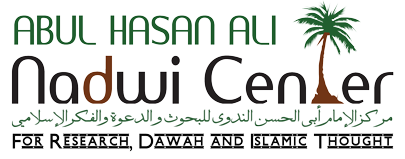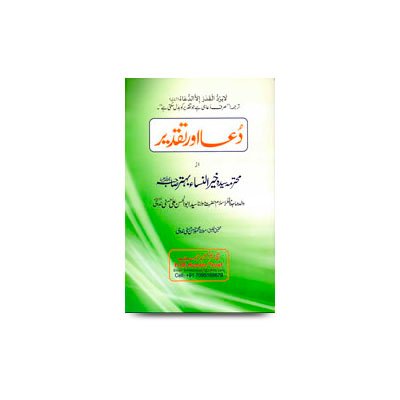Books by Khairunnisa Behtar – Mother of Mawlana Abul Hasan Ali Nadwi
Khair Al-Nisa Behtar
Khair Al-Nisa Behtar (1878 – 1968 CE), mother of Sheikh Sayyid Abul Hasan Ali Nadwi Rh, was one of the most prominent ladies of her time. She had a distinctive glory in servitude towards Allah, solitary, unworldliness, tenet and abstinence. She had perceived such a connoisseur in dua that very little women have experienced it. She was the daughter of prominent Sheikh, Shah Ziaun Nabi Hasani Rh.
Early Days
She was born in 1295 Hijri at 1878 CE. Her father was the most prominent sheikh and live souvenir of ancestors in solitary and piety. Her mother was also godly, unworldly and cultured woman. She continued the docility and education of her parents. Her father loved her for her natural ability of her interest and commitment in servitude towards Allah. She learnt Quranic translations from her father. She studied some important books, some of which that remained in her study and affected her deeply are: “Qasas Al-Anbiya”, Maqasid Al-Saliheen, “Ma’asir Al-Saliheen”, “Tareeq Al-Najaat”. Whenever there comes a book to her father, he usually mentions it to her and gives her to read.
Marriage
She was married to Sheikh Abdul Hai Hasani Rh, former rector of Nadwatul Ulama, in 1904 CE. This was the second marriage of Sheikh. During his life, her time was usually utilized in service and obedience to him. Continuity on Salat, Tahajjud and reciting of the Holy Quran always persisted. She herself quotes about her marital life: “This house was paradise to me and service as blessing, as though I have come under the shade of blessings, neither do I think of anything nor mourn, my time seems to pass in gratefulness.” Thus, this period was passing with happiness, gratitude, blessings and grace, and then suddenly Sheikh Abdul Hai Hasani Rh died on 2 February 1923 CE. During this span, in life and family, many ups and downs showed up, some babies were born, and times of happiness and trouble were faced but her perseverance in supplication, recitation of Quran and her routine always persisted.
After her husband’s death, she turned solitarily towards Allah. She used to get up for tahajjud at half past one in summer and at three after midnight in winter; and in Ramadhan, she used to get up at one after midnight in summer and half past one in winter. She recited long chapters from the Holy Quran in Salats, she used to weep so much in tahajjud that the rug usually damped with her tears. She never wished any materialistic gains for herself and her children, save the love for Prophet Muhammad (pbuh), religious etiquettes and religious servitude was her wish.
Career
Her supplications (Dua) were the most evident part of her life. She was spiritually attached to supplications. The center of all her supplications was her beloved son Sheikh Sayyid Abul Hasan Ali Nadwi Rh. Her wish was that Allah may take the service of strengthening and propagation of Islam by her son and that innumerable people may render Islam through him. This was the passion and intention on which she brought him up. She took care of his religious development more than his materialistic needs.
Death
The continuousness of tahajjud, nafil (voluntary prayers), supplication, Dhikr and Munajaat persisted to her last days. Her age crossed ninety years, eye sight was lost but her routine was not affected. Even just before her death, she continued the Dhikr and when she was agonizing in her death, the voice of Allah… Allah… was whispering through her breath, her death was known with the stopping of these whispers. This incident took place on 13th of August 1968 H. she left behind her son Sheikh Sayyid Abul Hasan Ali Nadwi Rh and two daughters – Sayyida Amat-ul Aziz and Sayyida Amat-ullah Tasneem, who were practical pictures of her supplications.




